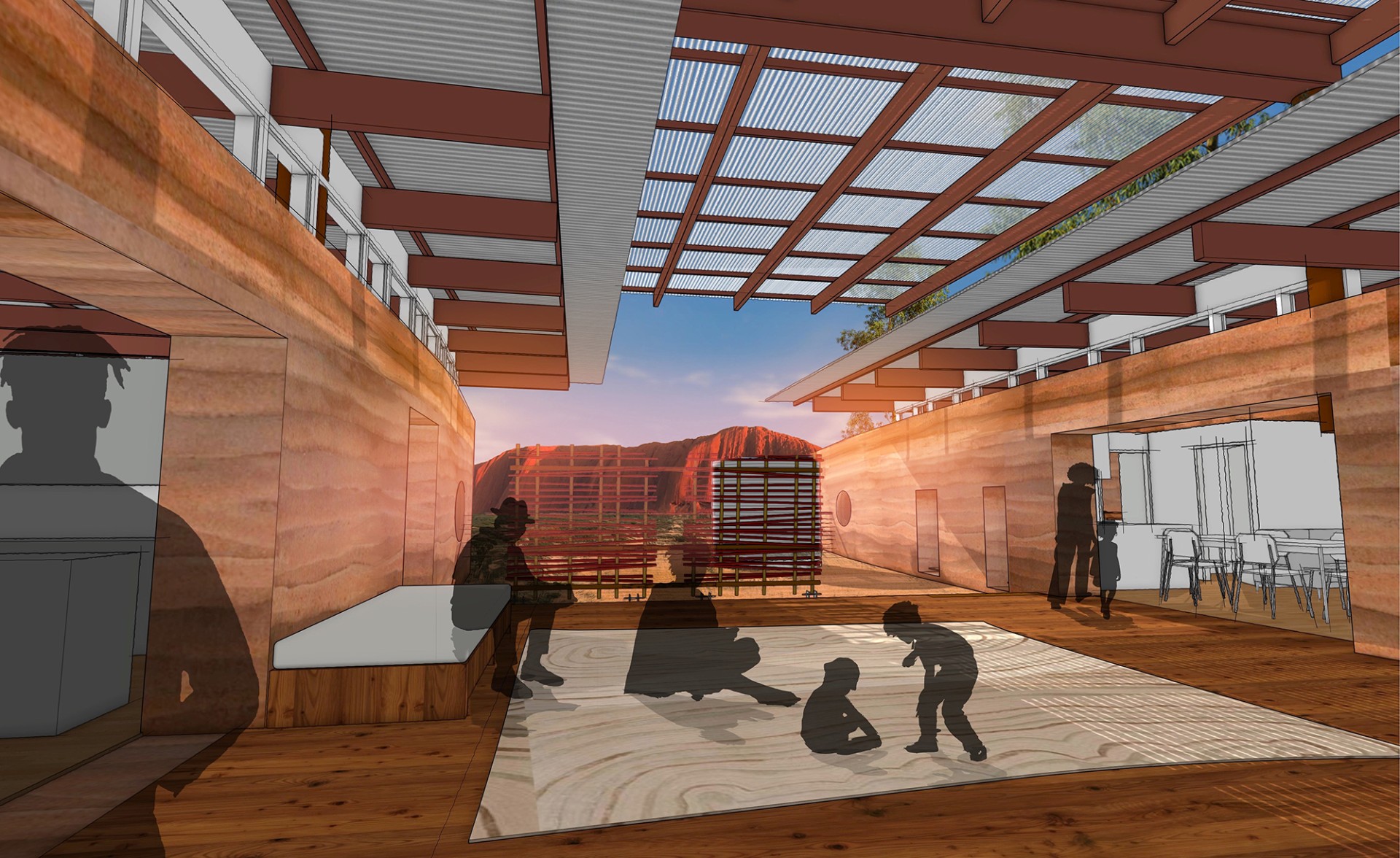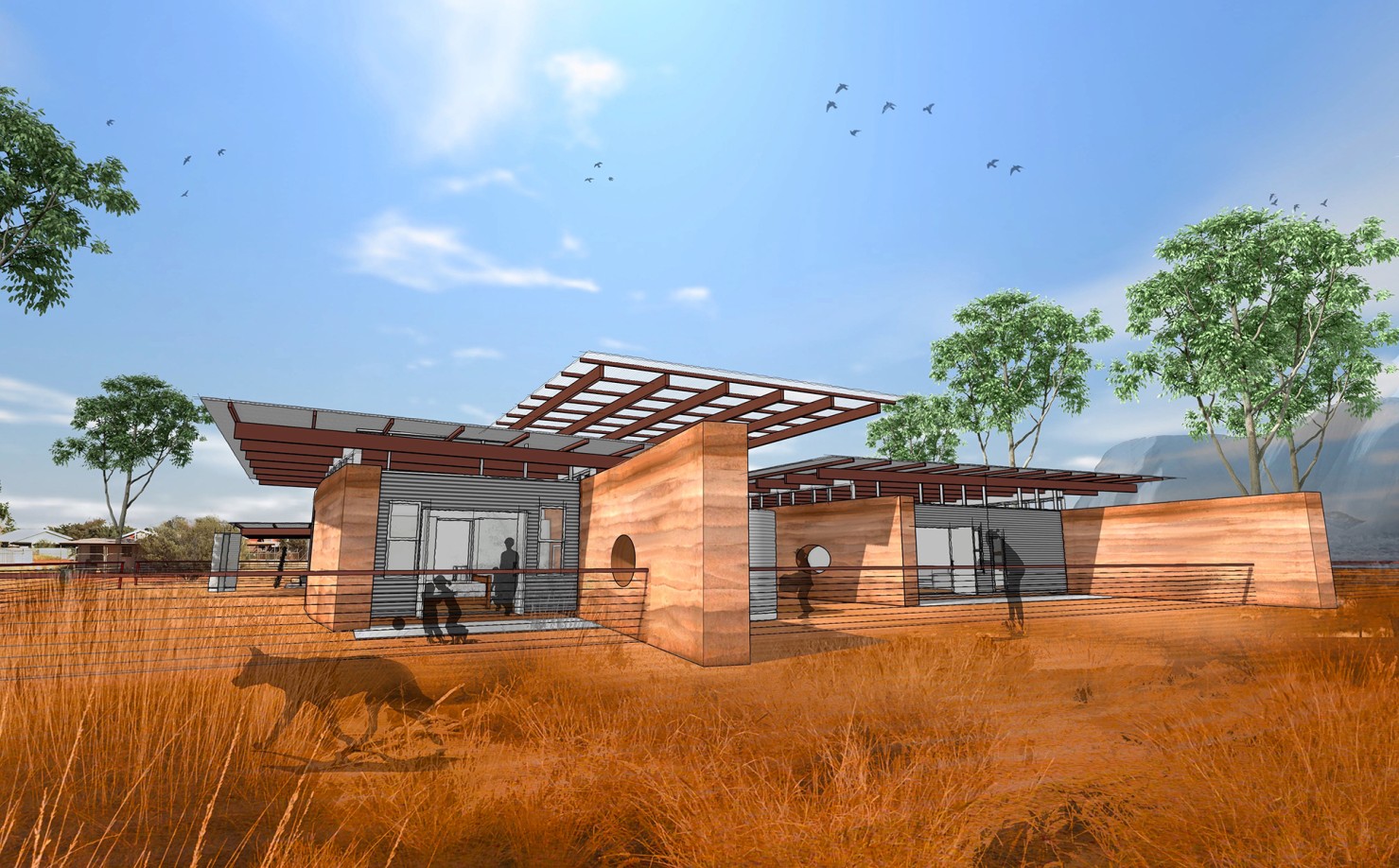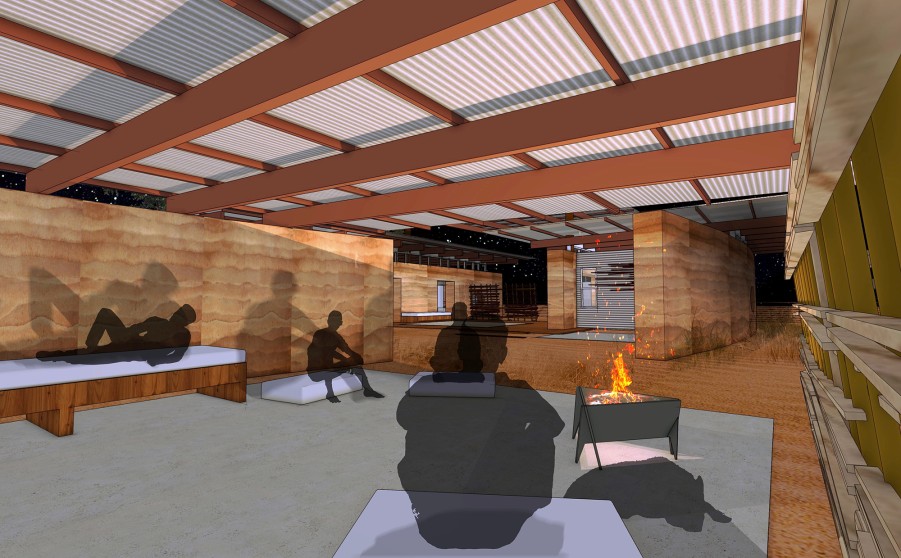
Craig Kerslake
NSW Architect Registration No. 7789

Nguluway DesignInc was approached by a member of the Mutitjulu community to produce an alternative housing design more reflective and suitable for the Anangu people in Central Australia.
The current housing stock lacked cultural belonging, and often suffered vandalism. Our aim was to provide a dwelling design for a particular community member that imbued cultural protocols and sensibilities as an example of better design solutions.
Designing from Country at every step, the overall planning considers social dynamics such as extended family connections, male and female specific gender spaces, indoor and outdoor living and sleeping and a way of connecting built form to ‘Grandmother.’

Rethinking space
The response was to layer spaces around the cultural idea of journey. An experiential hierarchy was established starting from the point of arrival and carried through into more private introspective spaces.
A central covered deck acts as an arrival point with a semi-public quality, whilst creating both connection and separation to two separate living spaces. Alternate sleeping and living options are now viable for guests with seats that can transform into sleepout beds, and options for people to sleep on the open deck to take advantage of the cool breezes or to adhere to cultural protocols of being separate to certain family members.
A womens business verandah was created with views to Uluru. This is a special place for a grandmother to teach her granddaughter art, weaving and other ‘business’ of which men are not privy to.
Of the place
The community requested that wherever possible, materials and construction be kept local. As a result, the design is based on sand bricks and thick earth walls that could be made by local community members from the sand found adjacent to the site.
A structural system of portal frames could be erected and the roof installed as the first building elements which offer a shaded building platform to work under. Beyond this the walls would be progressively formed with the raw material being expressed internally and externally as the finished expression of Country.



NSW Architect Registration No. 7789